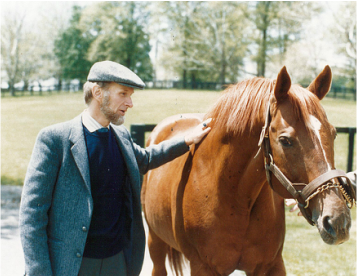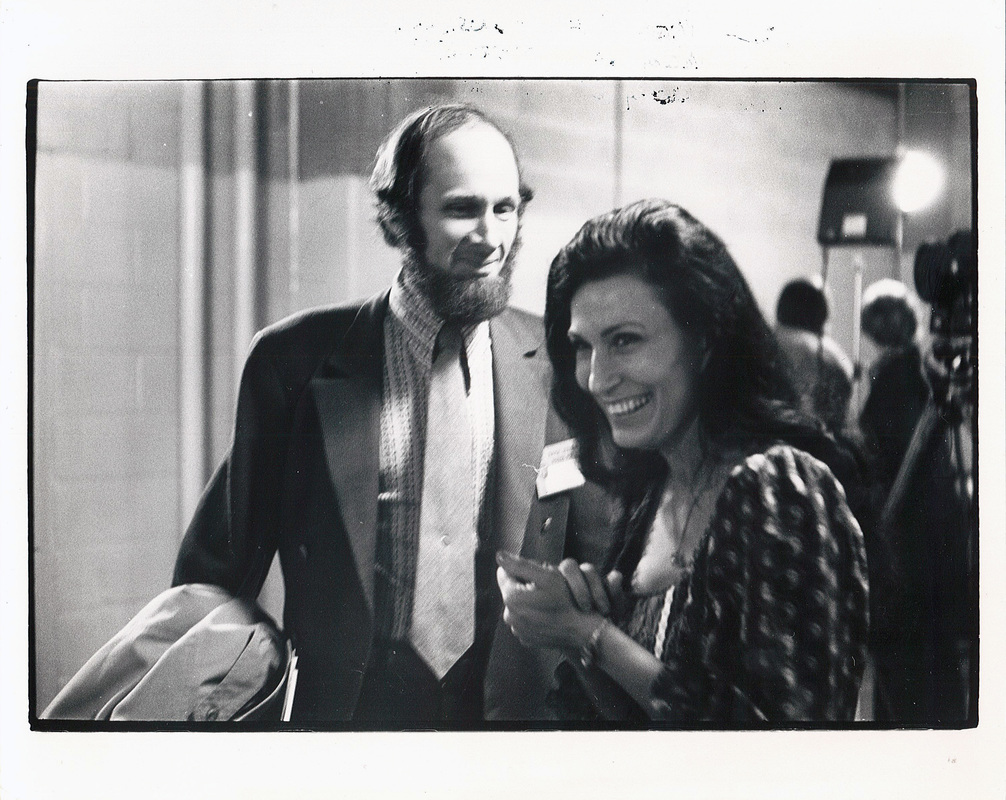|
I’ll be discussing my long relationship with Kentucky this Saturday in my town, Port Washington, Long Island – at the Dolphin Bookshop right after 3 PM.
Mostly I’ll be talking about how a few years of living in Kentucky gave me enough material to fill my head and my books and my articles forever. I doubt I’ll get to all the stories, so let me tell how this photo with Secretariat came to be taken: It started on May 6, 1989, when Sunday Silence won the Derby. At the media party late that night, a friend offered a tour of Stone Farm, where Sunday Silence’s sire Halo lived. Oh, and on the way back up Winchester Road we could stop at Claiborne Farm to see Secretariat. I am not a racing guy, never bet, have no clue who is running in the Derby on Saturday, but when I covered the Derby, I could learn the new cast of characters. Mostly, I loved the mystique of the Derby that makes Kentucky so different. I get misty when everybody stands and sings “My Old Kentucky Home.” I love the John Prine version: https://www.youtube.com/watch?v=UHcjwLoIFXE Plus, nobody passes up a chance to see Secretariat. First, we stopped at Stone Farm and visited Halo’s stall. I moved close to the wooden slats, only to feel the strong, insistent nudge of the groom, Handsome Sam Ransom, moving me back. “He bite your head off,” Handsome Sam said. The other horse people nodded. Mean SOB. I didn’t give Handsome Sam enough credit in my column that week: http://www.nytimes.com/1989/05/14/sports/sports-of-the-times-a-visit-to-the-father-of-champions.html We paid homage to Halo and his genes from a safe distance, then headed to Claiborne Farm. My guide, Fara Bushnell, who had some thoroughbred business with a couple of English buyers, handed me a couple of sugar cubes. Not supposed to feed the horses, she said, but…. We walked over to the fence, alongside a low hill of lush Kentucky bluegrass. I put a sugar cube on my palm. The hillside began to shake, better than an earthquake -- a 19-year-old, reddish of color, with a white patch on his nose. Big Red lumbered over. He knew the drill. A wet nose nuzzled my palm, taking his present.Then he stood still, allowing me to touch his swaybacked side. My friend snapped the photo. Big Red could go now. I never saw him run in person, but I have written about him dozens of times since, whenever some interloper tries to win the Triple Crown. I cannot tell you who the greatest baseball player or basketball player was, but I will tell you that nobody came close to Secretariat, the way he won the Derby, the Preakness, the Belmont. Five months after my visit, Secretariat was put down lovingly at Claiborne Farm. Enough was enough. They said the earth shook when he went down. The great Bill Nack wrote an homage to him that you really ought to read: http://www.si.com/longform/belmont/index.html Big Red is only one reason I revel in the legends of Kentucky – the miners, the politicians, the hard-shell county judges, the singers, the farmers, the complicated world of Louisville, the charming madam and collector of majolica in Bowling Green, Pauline Tabor. Kentucky was endlessly fascinating. (Don’t judge it by McConnell and Paul.) I’ll talk more at the Dolphin Bookshop, down near the scenic Town Dock in Port Washington, this Saturday. Hope to see you there.
Edwin W. Martin
4/29/2015 10:33:06 am
Terrific story and wonderful links. Also quite Lincolnesque! "The Sun Shines bright..."
George Vecsey
4/29/2015 12:38:59 pm
Ed, it's a nice version. Prine spent time in Western KY as a kid.
Ed Martin
4/29/2015 03:50:47 pm
When I worked in Washington, I had to testify before the House Appropriation Committee for Health, Education,etc. which was chaired in the mid 70's by William Natcher of KY. Mr. Natcher was quite reserved, polite, serious, a kind of southern or Appalchian gentlemen.
George Vecsey
4/30/2015 12:49:12 am
Natcher was from Bowling Green and Western Kentucky Univ -- the home base of the aforementioned Pauline Tabor, the majolica-collecting madam I met. (That part of the state is far from the eastern mountains.) 7/2/2015 11:26:41 pm
This generator is generating unlimited free amazon gift card codes and these amazon gift card codes are for taking discounts. Comments are closed.
|
Categories
All
|











